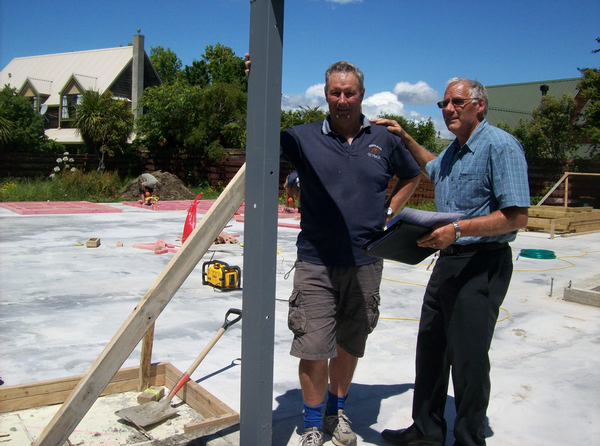It Makes Sense To Be Licensed Architect Says
Tuesday 14 February 2012, 3:40PM
By Department of Building and Housing
669 views
A senior architect won’t be recommending the names of anyone in the building industry to his client unless they are licensed.
Roy Price, a member of the New Zealand Institute of Architects, says the reality of Restricted Building Work which comes into effect on March 1 this year is that tradespeople must be licensed.
From the March 1 date, any residential building project involving structural change or weather tightness must use people who are Licensed Building Practitioners (LBP).
“We must have confidence in the builder and subcontractors to produce the best job for the client. As architects we’re reliant on the building industry to do their workmanship to the highest level,” Roy Price says.
“Architects have recognised the need for their own qualifications and maintaining competency levels for many years. The Department of Building and Housing acknowledges that by recognising us as being licensed. It’s now requiring the building industry to meet similar standards.”
Roy explains that nine times out of 10 a client engages an architect who will then design and manage the project for them. This means builders who aren’t licensed building practitioners will find work difficult to obtain. Now that’s a compelling reason for tradespeople to be licensed by March 1 he says.
Roy is putting his money where his creative talents are. He’s designed a distinctive two storey home and engaged a builder with the right qualifications to do the job.
Phil Round is a member of the Manawatu branch of the Master Builders Association and owner of Avenue Construction Ltd. He’s been a builder for 30 years and, for the next few months, he’s constructing Roy and Lois Price’s new home.
Phil has supported the government’s Building Act Review “for a long time now” and, when it introduced Restricted Building Work, he was one of the first to be licensed. “Using a LBP means you know the builder has the appropriate skills to do the work and, if things go wrong, there’s a process for the owner to seek recourse,” Phil says.
“There’ve been too many people out there who pick up a hammer and call themselves a builder. Yet building or renovating a home is the biggest investment people can ever make and, until this review has come along, they’ve had little protection.
“In the past developers have engaged people without the necessary skills which has resulted in shoddy work.”
Phil has another string to his bow or nail to his hammer. He’s a nationally appointed arbitrator and mediator for the industry. If people have disputes with builders or tradespeople over payment or workmanship then Phil, as a member of AMINZ (Arbitrators Mediation Institute of NZ), gets called on to adjudicate.
He sees the licensing of building practitioners whether builders or plasterers or bricklayers or roofers as crucial in a dispute situation. “Being licensed will provide recourse for the consumer. People can now go to the DBH which, in turn, will take their complaint to a disciplinary tribunal,” Phil says.
“There’ll be a defined complaints procedure to deal with issues.”
Both Phil and Roy have trod the professional qualifications path and emphasise there’ll be little work for people who decide against being licensed.
“Being licensed is criteria for obtaining work. If you’re not then clients won’t want you on site. We want to satisfy them that they have a reputable builder with a reputable team,” Roy Price says.
Phil Round sees his licence as proof that his skills and training undertaken over the years are recognised. “When I quote for a job I say I’m a member of the Master Builders Association and a licensed building practitioner. And I’m including it on my website. It’s put the building industry on a new and more professional footing.”
